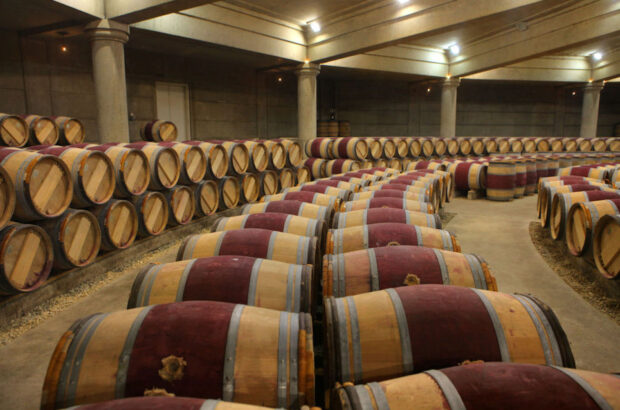Six new Peruvian wine grape varieties have been identified by researchers in the desert province of Caravelí in the Arequipa region of south Peru.
DNA tests conducted by the Instituto de Biotecnología de la Universidad Nacional Agraria La Molina (IBT-UNALM) in Peru and the Instituto de Investigaciones Agropecuarias (INIA) in Chile have confirmed the identity of six new grape varieties: Jaen, Cantarilla, Ceniza (also known locally as Mulata), Negra de Caravelí, Loca and Moscatel Negra Rubío.
Each of these grape varieties is as yet unregistered with the Vitis International Variety Catalogue (VIVC).

The newly discovered Jaén grape variety
At least two of the varieties, the white Jaén (above) and the red Cantarilla (top) – both natural crossings of Negra Criolla and a local variant of Moscatel d’Alexandría – are considered to have organoleptic characteristics worthy of propagation for wine production.
In addition, Ceniza, Negra de Caravelí, Loca and Moscatel Negra Rubío – four newly identified mutations of the Negra Criolla variety – have been deemed to warrant further research.
Lead researcher Keith Díaz (below), an agronomy engineer from the Caravelí region, is now seeking registration for these varieties in the VIVC international wine grape registry. In addition, Díaz is developing a digital ‘geo-referencing’ tool to ensure traceability and quality should anyone wish to propagate them.

Researcher and agronomy engineer Keith Díaz
‘From the study carried out, it has been possible to observe that two grapes – Cantarilla and Jaén – have the greatest potential for wine due to the good levels of tartaric acidity that they achieve in the field with an early harvest,’ Diaz said. ‘This is something that Ceniza, for example, did not show on this occasion.
‘It is important to continue experimenting with these grapes to obtain more complete data.’
Though best known as a Pisco-producing nation, Peru has a long history of wine production. The Spanish colonialists arrived in the early 1500s, bringing vine material to the Americas for the first time. Historical archives indicate the sale of vineyards in Lima in 1540. Lima was founded in 1535.
Until now Quebranta – a natural crossing of Negra Criolla and Mollar Cano used in Pisco production – was thought to be Peru’s only unique wine grape variety.
Caravelí is a small, isolated wine region with a mere 70ha under vine. It is located at around 1,700m above sea level, eight hours’ drive from the nearest city of Arequipa, and around five hours’ drive from the Majes Valley, its closest winemaking neighbour.
The grape census was undertaken by Díaz with ampelographic technical support from Sebastian Debernardi. Further support was provided by Mario Casas, president of the Wine and Pisco Makers Association of Caravelí. Financing for the project was provided by the Provincial Municipality of Caravelí.







